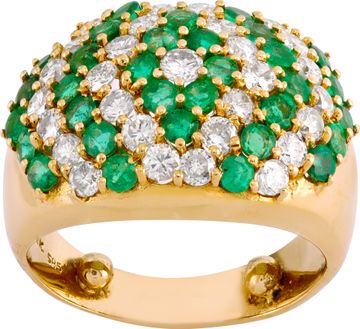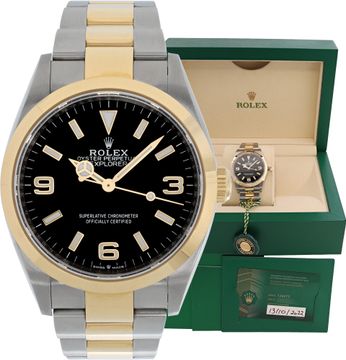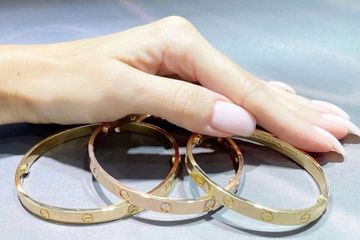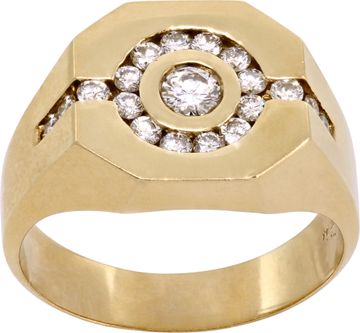The Evolution of Watch Design: From Classic to Contemporary
In the fascinating world of watches, watch design has undergone a remarkable transformation over the centuries. From intricate pocket watches to minimalist smartwatches, the evolution of timepiece aesthetics reflects not only technological advancement but also changing cultural values and fashion sensibilities. As we explore this journey through time, we'll discover how watchmaking has maintained its delicate balance between form and function.

Image Link: https://www.grayandsons.com/w528434-vacheron-constantin-pocket-watch-515m/
The Classical Era: Foundation of Timekeeping Beauty
The foundation of modern watch design can be traced back to the pocket watches of the 17th and 18th centuries. These masterpieces were characterized by:
- Ornate engravings and filigree work
- Roman numerals and railroad track minute markers
- Elaborate hands with sophisticated finishing
- Precious metal cases with hunter covers
- Exposed mechanical movements through crystal case backs
These design elements established the fundamental language of watch aesthetics that continues to influence contemporary timepieces. The attention to detail and craftsmanship set standards that modern watchmakers still aspire to meet.

Image Link: https://www.grayandsons.com/w528430-iwc-32mm-3732/
The Mid-Century Revolution: Birth of Modern Design
The mid-20th century marked a pivotal moment in watch design. The post-war era brought about significant changes:
- Clean, legible dials became prevalent
- Stainless steel emerged as a prestigious case material
- Integrated bracelets began replacing traditional straps
- Automatic movements drove new case shapes
- Sports watches gained prominence in everyday wear
This period saw the birth of many iconic designs that remain influential today. Watchmakers began experimenting with new materials and forms, pushing the boundaries of traditional aesthetics while maintaining functionality.

Image Link: https://www.grayandsons.com/w525682-unused-audemars-piguet-royal-oak-offs/
Contemporary Innovation: Breaking Traditional Boundaries
Today's watch design landscape is more diverse than ever, incorporating:
Advanced Materials
- Ceramic bezels and cases
- Carbon fiber composites
- Scratch-resistant sapphire crystals
- DLC (Diamond-Like Carbon) coatings
- Titanium alloys for lightweight comfort
Modern Aesthetics
- Skeleton dials showing mechanical artistry
- Minimalist "less is more" approaches
- Bold size statements (both large and ultra-thin)
- Mixed material combinations
- Interactive digital displays

Image Link: https://www.grayandsons.com/w528018-chronoswiss-opus-37mm-ch-7521/
The Digital Revolution: Smart Integration
The rise of smartwatches has forced traditional watchmakers to evolve, leading to:
- Hybrid watches combining mechanical and digital elements
- Enhanced functionality while maintaining classical aesthetics
- New interpretations of traditional complications
- Customizable displays and interfaces
- Sustainable and eco-friendly designs
This digital transformation hasn't replaced traditional watchmaking but has instead created a new category of timepieces that cater to contemporary needs while respecting horological heritage.

Image Link: https://www.grayandsons.com/w528627-iwc-top-gun-46mm-iw395505/
Design Trends Shaping the Future
As we look toward the future of watch design, several trends are emerging:
- Sustainability Focus
- Recycled materials in cases and straps
- Solar-powered movements
- Environmentally conscious packaging
- Ethically sourced components
- Personalization
- Modular design elements
- Customizable complications
- Interchangeable components
- Bespoke finishing options
- Technical Innovation
- New alloys and materials
- Advanced movement architecture
- Improved power reserve solutions
- Enhanced durability features

Image Link: https://www.grayandsons.com/w528471-iwc-da-vinci-rattrapante-39mm-3751/
Investment Potential in Different Eras
Watch collecting has become increasingly popular, with certain designs from various eras showing strong investment potential:
- Vintage pieces showcasing classical design elements
- Limited edition models marking significant innovations
- Watches featuring groundbreaking materials or techniques
- Pieces from transitional periods in watchmaking history
The value of these timepieces often lies in their representation of significant moments in design evolution, making them attractive to collectors and enthusiasts alike.
Where to Sell Your Timepiece
If you're looking to sell your watch, whether it's a classical masterpiece or a contemporary marvel, the buying division of Gray and Sons, Sell Us Your Jewelry is here to assist you. As experts in evaluating timepieces from all eras, we understand the unique characteristics and value propositions of watches across the design spectrum. Our team of specialists can accurately assess your timepiece, taking into account its design period, condition, and market demand. Whether you have a vintage pocket watch with intricate engravings or a modern luxury sports watch with innovative materials, Sell Us Your Jewelry offers a transparent, professional, and fair process to help you realize the true value of your timepiece. Visit their website or contact them today to learn how you can sell your watch with confidence, knowing that its design heritage and historical significance will be properly valued.
Throughout the evolution of watch design, one thing remains constant: the pursuit of excellence in both form and function. From classical to contemporary, each era has contributed to the rich tapestry of horological design, creating timepieces that are not just instruments for measuring time but works of art that reflect the spirit of their age.
Exquisite Pre-owned Luxury: New Arrivals and Exclusive Deals at Gray and Sons - November 19, 2024
NEXT ARTICLE
Mastering Complexity: A Collector's Guide to Patek Philippe Complications and Their Value in 2024






